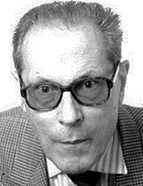

Over his lifetime, he oversaw more than 100 theses, including 28 theses on Brazil between 1972 and 1997.Among these were works by scholars such as Luiz Felipe de Alencastro, who would later hold the chair of Brazilian History at the University of Paris-Sorbonne, and Guy Martinière (Silva, O Brasil construído de fora… [Brazil built from outside...], 2014, pp. 41-43). Mauro followed the work of Brazilian historians in Paris, though his critiques were not always favourable (Machado, "Dois tempos de um percurso de experiências historiográficas…" [Two times in a journey of historiographical experiences], 2015, p. 148 ).Mauro authored and coordinated works dedicated to the history of Brazil and Latin America, and economic history more broadly. The collective work La pré-industrialisation du Brésil: essais sur une économie en transition (1830/50-1930/50) [The pre-industrialisation of Brazil: essays on an economy in transition (1830/50-1930/50)], published in 1984, was the result of research conducted at CREDAL, a laboratory associated with the CNRS47. In 1991, Mauro coordinated a volume included in the Nova História da Expansão Portuguesa [New History of Portuguese Expansion], directed by Joel Serrão and A. H. de Oliveira Marques: O Império Luso-Brasileiro 1620-1750 [The Luso-Brazilian Empire 1620-1750]. After his academic jubilation, it is worth highlighting the tribute paid to the great historian by the Calouste Gulbenkian Foundation through its Cultural Centre in Paris. In 1995, the thick volume 34 of the Arquivos do Centro Cultural Calouste Gulbenkian [Archives of the Calouste Gulbenkian Cultural Centre] (1995) was published under the title Mélanges offerts à Frédéric Mauro [Miscellaneous offered to Frédéric Mauro]. Coordinated by Guy Martinière, a former student of Mauro, this collection gathered contributions that covered Mauro’s vast range of scholarly interests, including Portugal, Brazil, the Atlantic, and the Americas.
This work is financed by national funds through FCT - Foundation for Science and Technology, I.P, in the scope of the projects UIDB/04311/2020 and UIDP/04311/2020.
